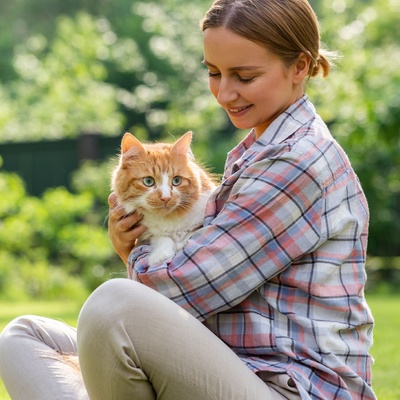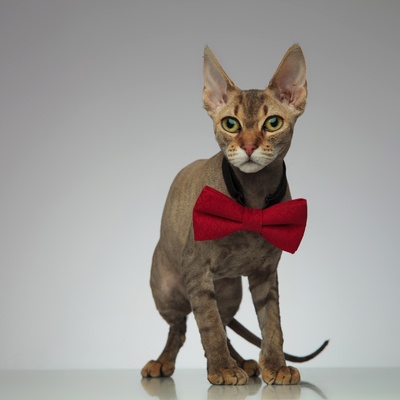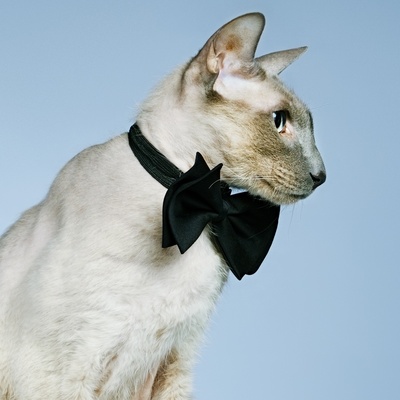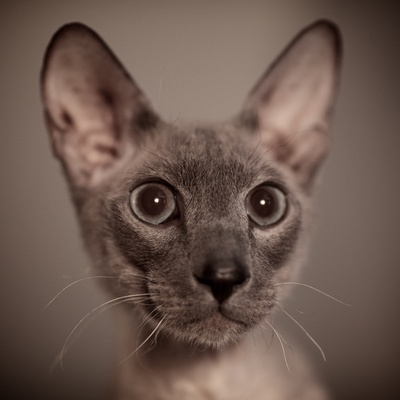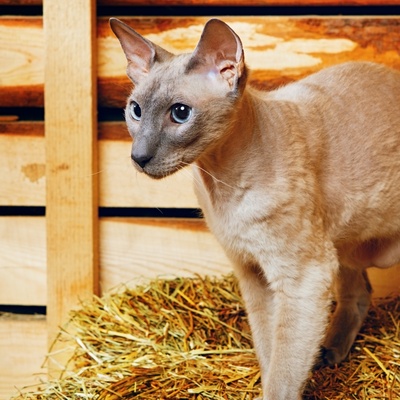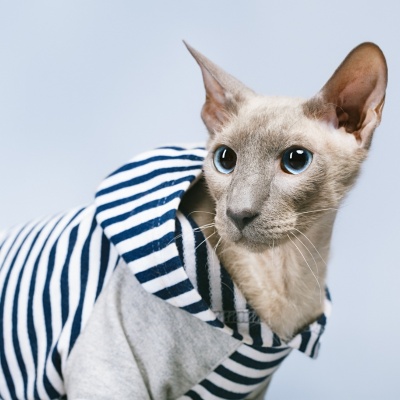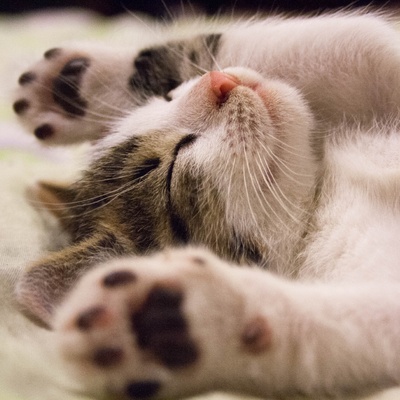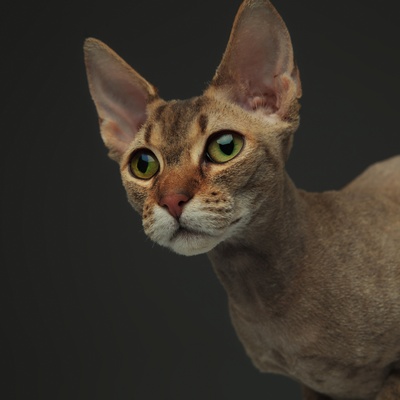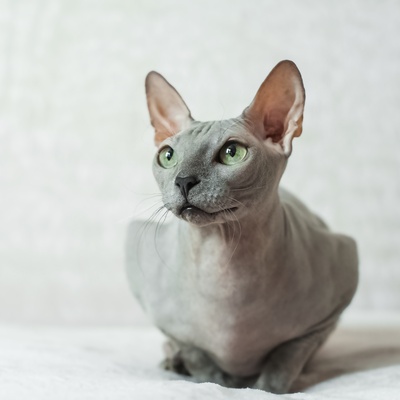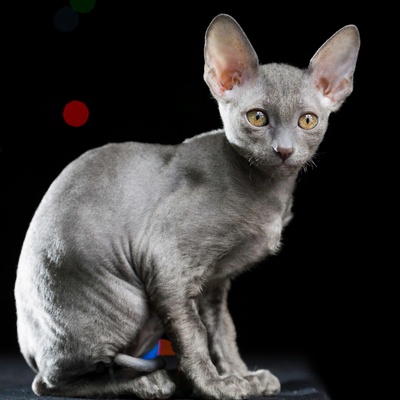Introducing the Peterbald
Find out everything you need to know about the Peterbald: its characteristics, its behaviour, its training and how much one costs.
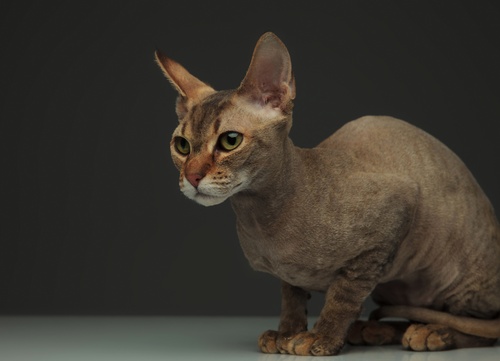
Find out everything you need to know about the Peterbald: its characteristics, its behaviour, its training and how much one costs.
The Peterbald stands out as a truly exceptional breed. Originating in Russia, this breed was developed through a deliberate cross between the distinguished Russian Donskoy and the elegant Oriental Shorthair. This unique lineage bestows the Peterbald with a strikingly elegant appearance, often characterized by a hairless, sleek body, though some may have a fine downy coat.
Their distinctiveness doesn't end with their appearance; Peterbalds are known for their affectionate and sociable nature. They are active and intelligent cats, often seeking interaction and play with their human companions, yet they can also be serene and composed.
This section outlines the unique features of the Peterbald breed of cat.
This is a medium-sized cat, typically standing around 8 to 10 inches tall, with a weight range of 6 to 12 pounds, exemplifying a slender, elegant frame.
The most notable feature is its coat, which ranges from bald to a fine down, sometimes with a velvety texture, reflecting its unique genetic heritage.
Peterbald cats are often considered hypoallergenic, making them a suitable companion for individuals with cat allergies due to their minimal shedding.
They exhibit a variety of coat colors and patterns, from solid hues to more intricate markings, offering a diverse palette within the breed.
The Peterbald cat thrives best in a warm, indoor environment, appreciating cozy spaces and human interaction to keep them engaged and happy.
They are excellent with children and other pets, making them a harmonious addition to most households.
Generally, Peterbald cats are healthy, though they can be predisposed to certain breed-specific issues such as sensitive skin due to their unique coat.
They are usually easy to train, responding well to positive reinforcement and patient, loving guidance.
We can help you!
Every cat has its own character and specific needs. Making the right choice will ensure his well-being and yours.
Thanks to our quiz, you'll know which breed is right for you, depending on your lifestyle, expectations and many other criteria.
Don't wait any longer and take the quiz to find out the answer!
The Peterbald is most notable for its strikingly hairless appearance, resembling a sleek, feline sculpture more than a traditional cat.
The Peterbald is a gracefully slender cat, typically reaching a height of about 8 to 10 inches. Males tend to be slightly heavier than females, with males weighing between 8 and 12 pounds, while females usually weigh between 6 and 9 pounds.
Peterbalds are known for their prolonged growth period, often not reaching their full size until around the age of 3 to 4 years. Alongside their hairless charm, they boast a svelte yet muscular build and a strikingly long, whip-like tail.
The Peterbald's coat is unique and varies significantly among individuals. While some Peterbalds are completely hairless, others may have a fine down or a velvety coat. This breed can occasionally exhibit a light fuzz that lends a soft, suede-like texture to their skin.
The Peterbald's coat, whether present or not, can come in a diverse color palette. Common hues include solid colors like white, black, and blue, as well as more complex patterns such as tabby, tortoiseshell, and colorpoint, offering a range of visual appeal in these elegant cats.
Peterbald cats are often considered hypoallergenic and shed less, making them suitable pets for people with cat allergies.
Peterbald's luxury is not just on the outside. These cats are characterized by an elongated, lean body, graceful movements, and a special gait that is both agile and poised. Their ears are large, wide and often pointed, which gives them an alert and attentive appearance.
Their body structure combines smooth bones with incredible muscles, creating an elegant and refined figure. Their muzzle is usually narrow, straight in shape, and compliments their almond-shaped eyes, which come in a variety of colors from dark blue to bright blue.
Given their minimal to absent coat, Peterbalds require less brushing than more furry breeds. However, their skin does need regular attention to keep it healthy. It's recommended to gently wipe them with a soft, damp cloth to remove any dirt or oils. Bathing should be done occasionally with a gentle, cat-friendly shampoo. Though they are largely self-cleaning, these grooming practices help maintain the Peterbald's skin in good condition, especially for those with a slight fuzz.
The Peterbald is renowned for its affectionate, social nature, blending a playful spirit with a serene demeanor, making them ideal companions.
Peterbalds are exceptionally sociable and enjoy forming close bonds with their humans. They often exhibit a 'velcro' nature, preferring to be near their owners and following them from room to room.
Known for their love of attention, they thrive on interaction and play, and enjoy long cuddle sessions. Their vocalizations range from gentle purrs to expressive meows, reflecting their communicative nature. This breed thrives with a caring owner who can provide the necessary commitment and affection.
The Peterbald's temperament is marked by its adaptability and gentleness. They exhibit calmness and patience, making them excellent companions for families, including those with children, dogs, and other cats.
Despite their social nature, when overwhelmed, Peterbalds prefer to retreat for a quiet moment rather than show aggression, underlining their peaceful disposition.
Peterbald cats are remarkably adaptable, thriving in diverse living environments, from cozy apartments to spacious homes. While they enjoy human companionship, they also value having their own space for play and exploration. Their need for interaction and activity should be met to prevent boredom and maintain their well-being.
The Peterbald's active and curious nature requires stimulation through play and interaction, which is crucial for their mental and physical health.
You can fit them with a cat tracker to track their movements and find them if they run away or are stolen.
Early socialization and training are key for Peterbalds, establishing good habits from a young age. Training should be grounded in kindness, patience, and consistency, rewarding positive behavior. Incorporating play into training sessions can be highly effective, helping to keep them mentally stimulated and preventing undesirable behaviors.
Choosing a cat that matches your personality and lifestyle will ensure your well-being and his!
The Peterbald is an overall robust and resilient breed, known for its good health and lack of breed-specific health problems, making them relatively easy to care for in terms of health.
The Peterbald generally enjoys robust health but, like all breeds, may be predisposed to certain hereditary conditions. While not common, some may be prone to issues like hypertrophic cardiomyopathy or skin sensitivities, especially given their unique coat.
Responsible breeding and DNA testing can help identify and prevent the transmission of genetic diseases. Regular veterinary check-ups are essential for vaccinations against common diseases and maintaining overall health.
Peterbald cats, with their unique hairless coats, require gentle, regular baths and specific skin care. They need protection from the sun and help staying warm, including cozy bedding or clothing. A consistent dental care is essential for their health.
The Peterbald, with its slender build and defined musculature, requires a diet that maintains its elegant figure and supports overall health. High-quality kibble should form the basis of their diet, supplemented by water-rich green vegetables to aid in hydration and support kidney health.
It's crucial to provide a diet that supports their specific growth phase, maintaining a consistent brand of kibble and feeding at regular intervals to promote digestive health and stability.
Regular play and exercise are vital to keep them fit and healthy, and engaging in interactive play can provide both physical exercise and mental stimulation for these intelligent cats.
The Peterbald is a cherished and sought-after breed. Several breeders specialize in this unique cat. It is important to consider a few factors before adoption.
Purebred cats like Peterbalds are often bred by professional breeders or in catteries. It's crucial to visit the breeding site to assess the living conditions and ensure the cats are well-cared-for.
From June 10, 2024 you must have your cat microchipped by the age of 20 weeks old and register its details in a relevant database such as Petlog or The Governing Council of the Cat Fancy (GCCF). This is a legal requirement in Britain, and failure to comply could result in a fine of
.
It's also important to review health examinations and DNA tests performed on the kitten and its parents to identify any hereditary health issues.
Acquiring a Peterbald can be a considerable investment, with prices typically ranging from
to
, depending on factors like pedigree, breeder reputation, and color patterns. The initial cost reflects their rarity and the specialized care they receive as kittens.
Additionally, prospective owners should consider the ongoing costs of high-quality nutrition, regular veterinary care, and potential grooming needs, which are integral to the well-being of this distinctive breed.
Choosing a cat that matches your personality and lifestyle will ensure your well-being and his!
To access the most relevant information, suitable payment methods, and delivery in your region, please select the website corresponding to your country.

